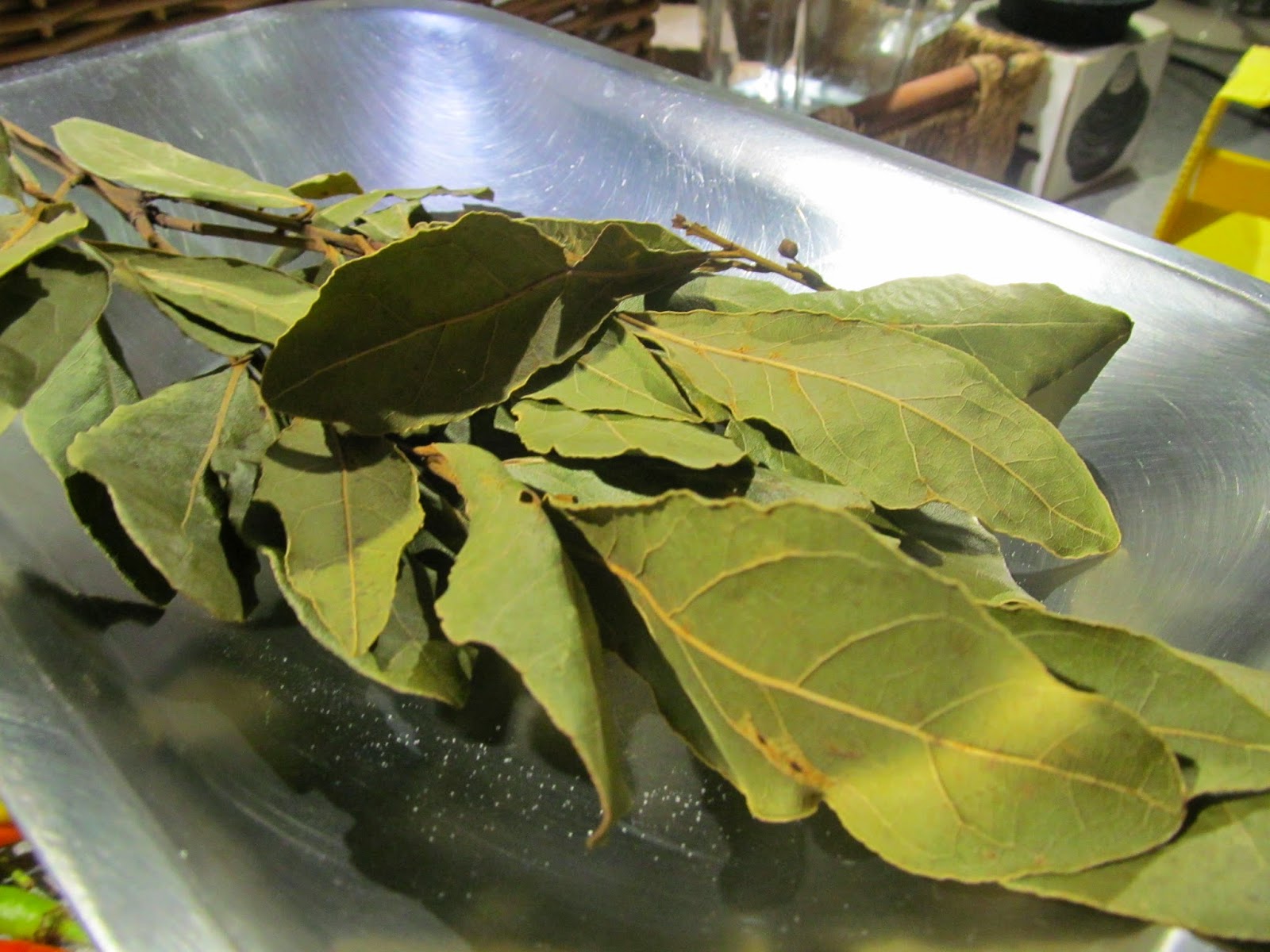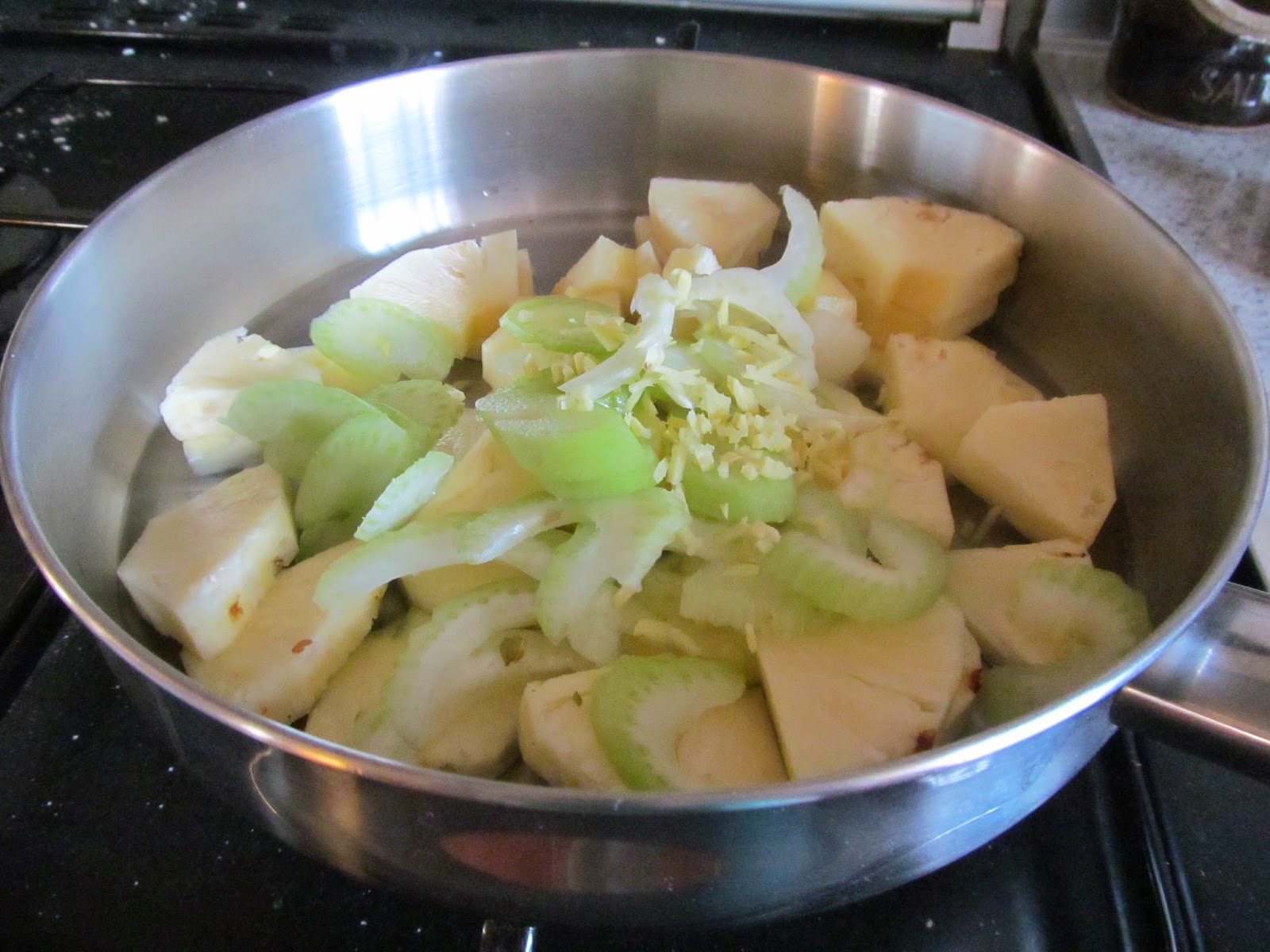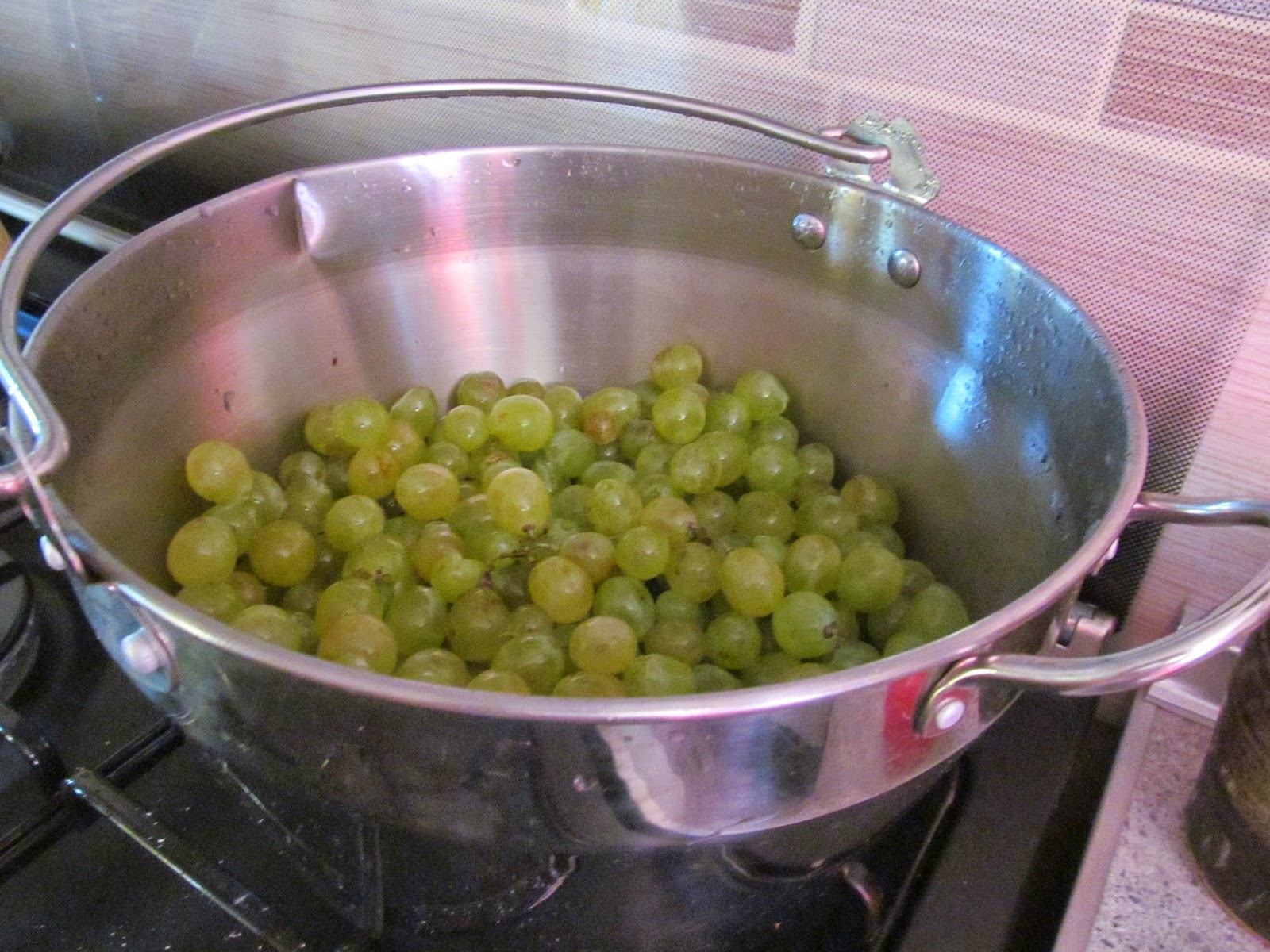Roast Goose - The goose was washed in vinegar and then stuffed with fresh rosemary and then left in the bottom of the fridge to rest until Christmas eve when I prepared the stuffing. Alas I could find no chestnuts in the shops or on the market (even though they had plenty the week before) so I substituted with walnuts. Bad idea. The taste was fine but the stuffing turned an alarming purplish colour which was a little off putting. So.... I would advise not using them in future.
The stuffing: Sausagemeat - in my case this was sausages squeezed from their skins. Chopped onion, celery, a little garlic, chopped apple, chopped goose liver, sprinkling of salt, pepper and mixed spice and then all mixed up by hand and the goose cavity filled.
A little salt sprinkled on the goose and covered with foil then roasted for nearly four hours... first at 180C and then after a couple of hours reduced to 160C. We spent so much time on skype with our family while the goose was cooking that I neglected to baste the goose frequently... which I should have done, though very flavourful the breast was a little dry. And as I said apart from the strange colour the stuffing was lovely.
The gravy was made the day before by roasting the goosewings with an onion, a carrot and half a celery stick, some salt and pepper and a couple of star anise. After bashing the bones and then roasting until all the juices run out I moved it onto the top of the stove and added a spoonful of flour and cooked until everything was very thick. Next I poured on some wine and then let it bubble and thicken up before adding about a litre of water. It was then left on the stove to bubble gently until reduced by about a third. The liquid was strained off and then seasoned and just before serving I added a good spoonful of grape jelly. Any jelly would do. The result was delicious.
Sussex Pond Pudding.
I have wanted to do this pudding for some years and now I thought was a good opportunity. It is a boiled suet pudding, very old fashioned and takes three hours of boiling so when are you going to do it if not at Christmas?
The recipe came from a Jane Grigson cookery book I found second hand. It is an excellent book and I have made many of the recipes from it without any issues.
The idea of the pond pudding is that you encase a whole lemon (speared all over to release its juice) along with butter and sugar in a suet pastry pudding and then boil. When cooked you turn the pudding out into a deep basin and the lemon juice combined with sugar and butter leaks into the dish... creating a 'pond' coloured lemony sauce.
Sadly. When turned out the sauce did not appear. And it would seem that the suet pastry had soaked it all up! Mmmmm. the pastry tasted great, the lemon a little tart but with cream it was edible. I am not entirely sure what went wrong. Any suggestions very welcome!
The garden did not produce any brussels sprouts in time for the feast so we resorted to carrots, broccoli and cauliflower - which was absolutely fine. We are not entrenched in any tradition that insists on specific food. The main criteria for a feast day is a feast. And that is what we had.
The best discovery of the whole festive season was that Mascarpone mixed with a little icing sugar tasted like clotted cream and was brilliant with the mince pies. Since cream is very hard to find here and the substitute Spanish stuff does not whip thick enough to use in Victoria sponge I have been looking for an alternative and though I suspect that I have forgotten exactly what clotted cream tastes like, the mascarpone would seem me to fit the bill. At any rate it was delicious and shall be used again, and again, and again. More festive food will no doubt appear come New Year, although we have been invited out so our Lamb shoulder will wait for another occasion. Watch this space.




















































